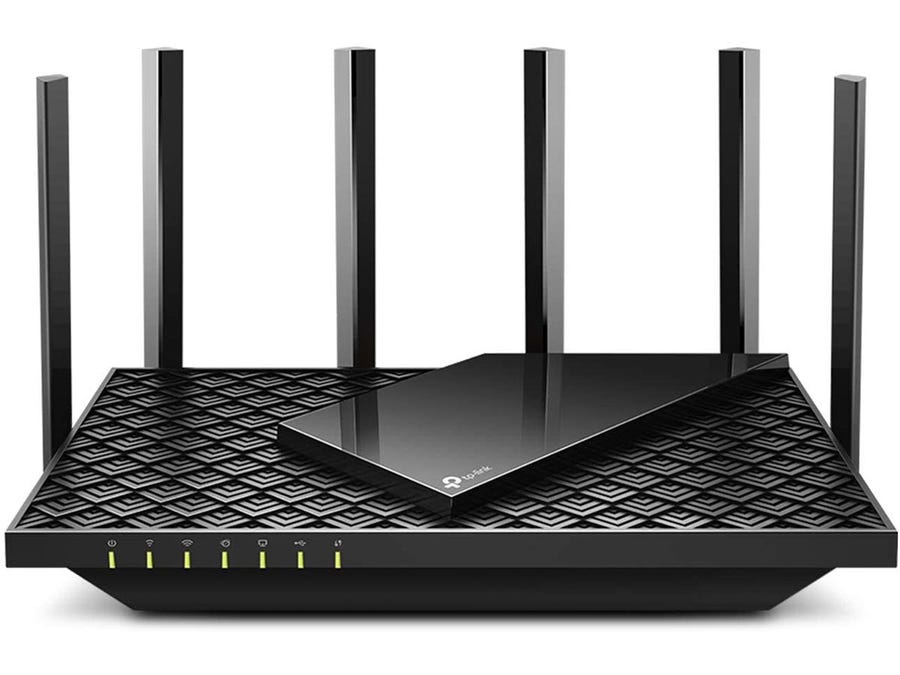
FAQs
Wi-Fi 5 vs. Wi-Fi 6: Which is better?
Wi-Fi 6 is a new wireless standard that delivers a huge performance upgrade over Wi-Fi 6. In our testing, Wi-Fi 6 routers are often two to three times quicker than similarly priced Wi-Fi 5 routers.
You will only see Wi-Fi 6 performance if you have both a fast router and a device that supports Wi-Fi 6, but most new smartphones, laptops, and game consoles (like the Xbox Series X and PlayStation 5) support Wi-Fi 6. Wi-Fi 6 routers still support older Wi-Fi standards, so they remain compatible with older wireless devices.
We generally recommend Wi-Fi 6 routers which, at this point, are fast becoming the standard. This is especially true when buying a standalone router instead of a mesh router: every standard router we recommend supports Wi-Fi 6.
Standard routers vs. mesh routers: Which is better?
A standard router is a single device that you'll typically place near your Internet modem with an Ethernet cable. Mesh routers have additional access points that connect wirelessly to the primary router which, again, will be connected to your Internet modem.
We recommend a standard router for most people. A modern Wi-Fi 6 router, like the top-rated TP-Link Archer AX73, can provide excellent coverage for a typical two-story, 2,000 square foot house. It can handle larger homes when placed in a central location with no nearby obstructions.
Mesh routers can improve reliability by using multiple access points to get around objects that cause Wi-Fi dead spots, like a large appliance or a concrete brick wall. Just don't expect higher maximum performance: in our tests, mesh routers didn't impress relative to their price.
Ease-of-use is often touted as a perk for mesh routers, but that's not true in 2021. Router companies have brought app-based router controls to all their products. The TP-Link routers we recommend have an excellent app experience that's often even more straightforward than a mesh system, since you don't have to set up or manage additional access points.
What is Wi-Fi 6E?
Wi-Fi 6E is the last wireless standard. Routers with Wi-Fi 6E started to hit shelves in the spring of 2021.
The standard's key upgrade is a new 6GHz band that joins the 2.4GHz and 5GHz bands found on most routers sold in the past few years. This new band is faster than the prior options and opens new portions of the radio spectrum that are less crowded. This should, in theory, provide another big leap in performance.
It's early days for Wi-Fi 6E. Very few routers support the standard, and those that do are expensive. Device support is also limited. You can't tap the full potential of Wi-Fi 6E unless you buy a new smartphone or laptop with a compatible wireless adapter inside.
What is 2.5G, 5G, 10G Ethernet, and do I need it?
Ethernet is synonymous with Gigabit Ethernet, which supports network speeds up to one gigabit (1Gbps), but the 2.5G, 5G, and 10G standards are starting to arrive on mainstream routers. These provide speeds of up to 2.5Gbps, 5Gbps, or even 10Gbps, respectively.
While fast, Ethernet standards beyond Gigabit Ethernet aren't useful for most people because few Internet providers offer service that can exceed one gigabit.
However, this feature could be useful if you have a wired home network that you use to transfer files between computers, and it becomes a necessity if you're among the lucky few with access to superfast fiber Internet.











